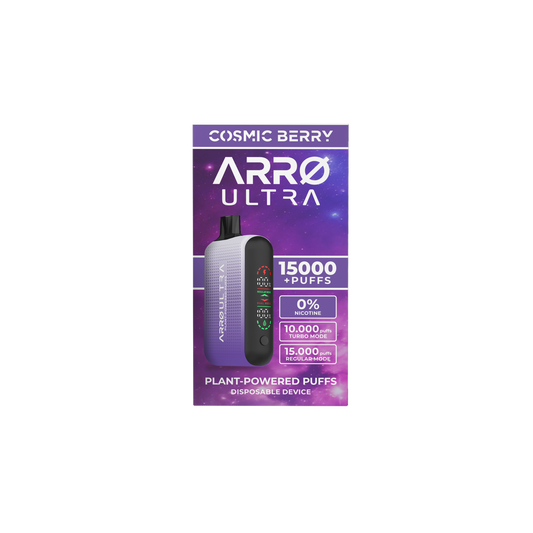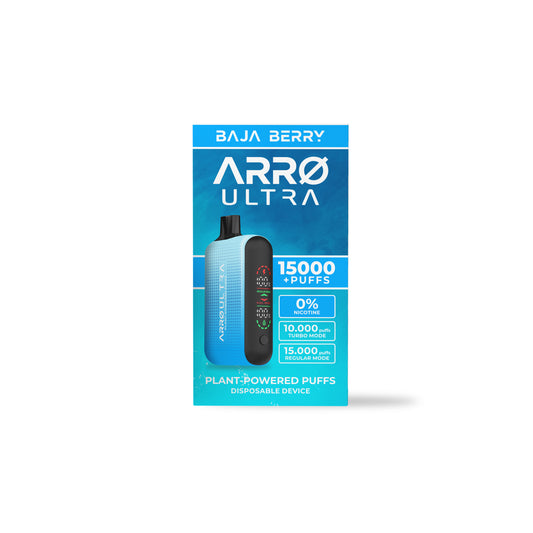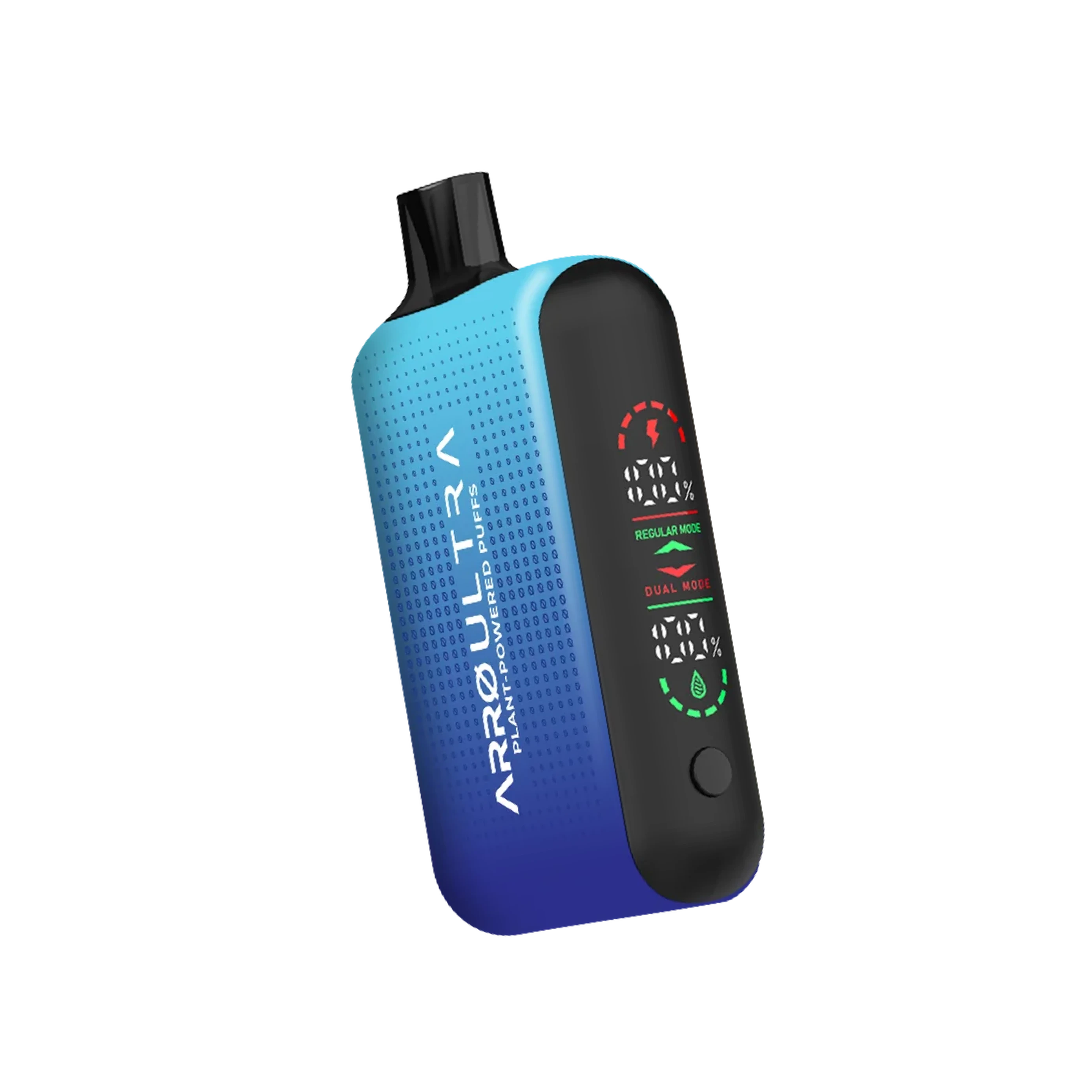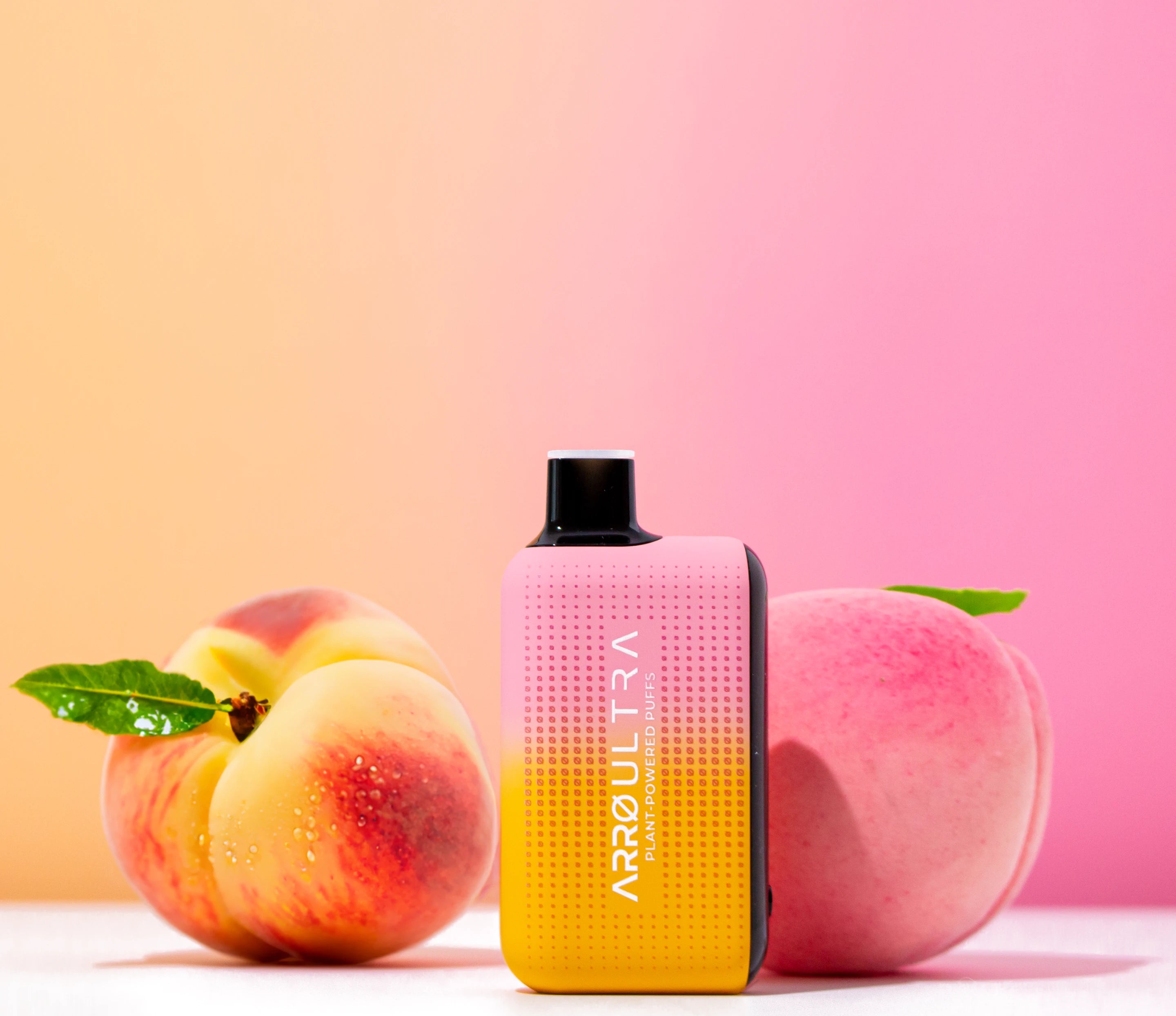Most pure plant vape
Ingredients Matter
Flavoring from fruit extracts
Propylene glycol
Vegetable glycerin
Our plant-based vapes are a tremendous nicotine-free vape alternative. They contain fewer harmful, toxic ingredients — there's no diacetyl, formaldehyde, or vitamin E acetate in any ARRØ product. Every ARRØ vape is 100% vegan-friendly.
Browse our rechargeable plant-powered vapes with different puff capacities (5,000 puffs or 15,000 puffs), choose from unique flavor options, and enjoy the benefits of ditching nicotine in favor of the best all-natural plant-based vapes available today.




Our plant vapes will help you overcome your nicotine addiction.

ARRØ’s vapes are not only free of nicotine and tobacco, but they also don’t contain any diacetyl, formaldehyde, or vitamin E acetate

A 15,000-puff ultra capacity offers weeks or even months of daily use.

Experience a smooth throat hit with less harshness or irritation, and satisfy your cravings.

Every ARRØ device is rechargeable with any USB-C cord.

From fruity and refreshing to indulgent dessert flavors, our vapes cater to a wide range of taste preferences.


Flavoring from fruit extracts
Propylene glycol
Vegetable glycerin

This was exactly what I wanted and was looking for. The hit is smooth and easy, satisfies my cravings. The taste is delicious like a fruity light menthol. It's super cute and a perfect size. Overall, it helps with my cravings. I'm trying to quit my vape.
I got this to help me stop vaping. It is very satisfying & a perfect alternative to other vapes with nicotine. I puffs & flavor is very satisfying. I definitely recommend this!
Was very pleasantly surprised by this product. The puff was robust and definitely satisfied the smoking feeling without that metallic after taste. Highly recommend this brand and can't wait to try the other flavors.
These are absolutely amazing!! I seriously never thought I would be able to quit smoking, but this is the best alternative I have ever tried, and with 0 nicotine. So glad I found these products.
I discovered this brand a couple weeks ago to finally quit using nicotine. I purchased the Magic Mint flavor and I have to be honest; they have not disappointed! The flavors and throat sensation are very noticeable and satisfying, and you get a lot of juice for the price compared to most other brands.
While specific ingredients in any particular plant-based vape will vary based on the manufacturer, as well as the exact variety or vape flavor within a manufacturer’s lineup, what you'll typically find are botanical extracts or herbs (things like chamomile, lavender, lemongrass, peppermint, and many, many others), flavorings and perhaps spices.
Some vapes, known as “functional vapes,” might contain active ingredients designed to produce some sort of health benefit.
In these vapes, you might find vitamins, amino acids, melatonin, caffeine, or other naturally occurring ingredients that are considered beneficial to your mind or body.
You'll also find a carrier liquid. This liquid will typically comprise a blend of vegetable glycerin and propylene glycol.
Vegetable glycerin is mainly responsible for the vapor cloud you experience when vaping, while propylene glycol is the liquid primarily responsible for the ‘throat hit’ sensation you feel.
Again, while specific ingredients may vary from manufacturer to manufacturer, one thing you won't typically find in a plant-based vape is nicotine — which we’re assuming you'd like to avoid.
Plant-based vapes may be vegan, but they're not always vegan. Despite the name, a plant-based vape may contain ingredients that push it out of the strictly vegan category.
Most of the typical ingredients in a plant-based vape — like botanical extracts, herbs, or flavorings derived from plants — would likely be considered vegan.
Even the carriers used in most plant-based vapes that don't contain nicotine — vegetable glycerin and propylene glycol — are derived from plants and would therefore be considered vegan.
However, some manufacturers may use carriers that are not vegan, include flavorings or other ingredients that are not vegan, or use various ingredients derived from animals, which obviously would make them non-vegan.
As always, your best bet is to thoroughly read the list of ingredients for any vape you're considering. Also, look for labels on the brand’s packaging. Most manufacturers are eager to let people know when their products are vegan-friendly.
ARRØ vapes, naturally! Yes, we're biased, but we have good reason to be. Every ARRØ device that leaves our production facility is 100% free of nicotine, vitamin E acetate, diacetyl, formaldehyde, and all of the other nasty ingredients you might find in other brands’ vapes.
That's what's not in an ARRØ. What about what is in an ARRØ?
Here, too, our brand excels. Every ARRØ disposable vape contains only the best plant-based ingredients — from the vegetable-based glycerine that acts as the carrier agent to the fruit extracts we use for flavoring.
For more information, check out our deep-dive on The Best Plant Based Vapes.
While no one can say for sure that any vape — even a plant-powered vape — is always going to be 100% safe for 100% of people, plant-powered vapes are generally considered at least as healthy as any other vape that doesn't contain nicotine.
And they’re almost certainly going to be healthier and better for you than any vape with nicotine. Nicotine is harmful to your body all by itself.
However, even though a vape is derived from plants or botanical ingredients, that doesn’t mean it will be entirely safe for you. Everyone reacts differently.
Given the wide variety of ingredients that can be included in any vape, you will have to do a little bit of light homework to make the best choice for you.
One of the first things you want to consider is the manufacturer’s reputation. Does the brand have plenty of reviews? Has it been around long, or is it completely new to the market?
Is it upfront about the ingredients that it puts in its products? Or does it try to obscure the exact nature of the inputs? These questions can help you determine if a particular vape is safe.
Beyond standard considerations like these, consider any ingredients to which you may be allergic or sensitive.
For example, if you're sensitive to caffeine, and a couple of cups of coffee typically have you bouncing off the walls, a vape that contains caffeine — even if it's plant-based — might be harmful to you personally.
A good general rule of thumb is this: if you can't tolerate a particular ingredient outside of a vape or wouldn’t eat it if put on a plate, you want to avoid it when it's inside a vape.
For more information about health and safety, check out Are Plant-Based Vapes Safe?
No one really knows of any severe side effects that are specific to plant-based vapes that wouldn't also apply to other kinds of vapes as well.
In fact, there are probably a lot fewer — as long as the vape in question is nicotine-free. Nicotine consumption causes an entire set of nasty side effects that apply to it, and it alone, including high blood pressure and an increased risk of heart attack or stroke.
But assuming the vape in question doesn't contain nicotine, possible general side effects might include standard vape-caused issues like mild throat or lung irritation, which can lead to shortness of breath or coughing.
Also, as mentioned above, you might have specific allergy concerns. You can lessen the potential for these side effects by avoiding any vape that contains a substance that you may be allergic to outside of vaping.
Finally, remember that vaping is still relatively new, so there hasn’t been enough time to study its long-term effects fully.
For more about nic-free vaping, see our article on the Pros and Cons of Vaping without Nicotine.
I like the lightness of the flavor! I cut nicotine over three years ago and these vapes are consistently better than the rest
I have never had a nicotine addiction, but i am a regular vaper of non-nicotine vapes so i was curious about this brand. I am very impressed! this is now my absolute favourite vape out of all the ones i've tried so far. very smooth draw, lovely clouds, great value for the price, and the flavour is also delicious in my opinion. Highly recommend!
Fast ording.good price.good taste.everything is all good
